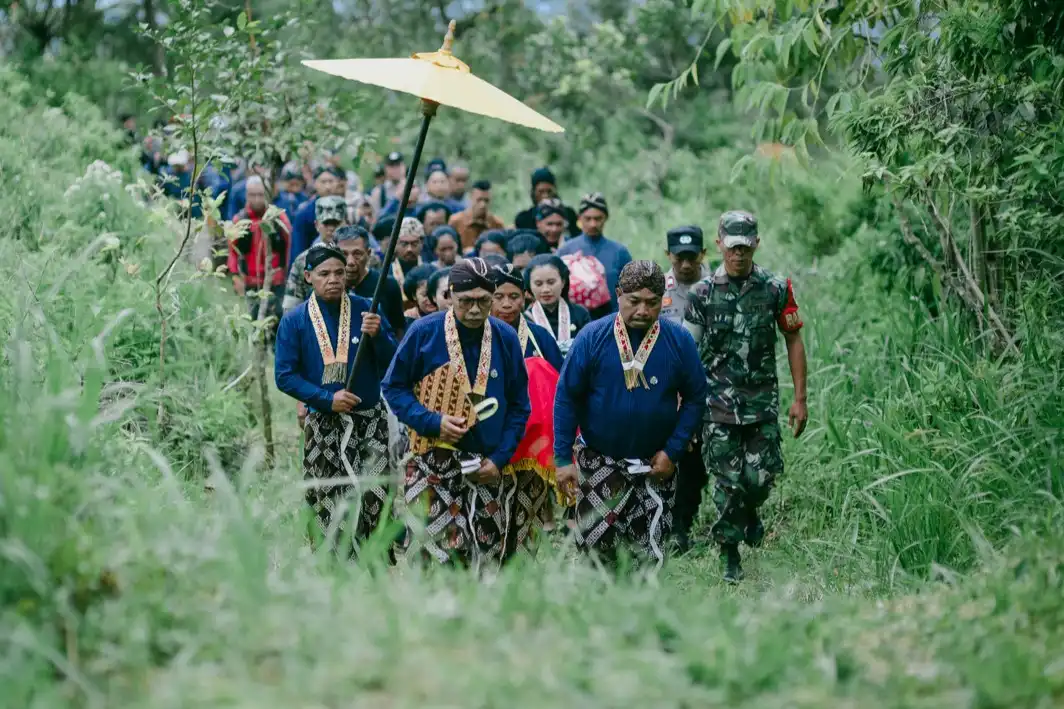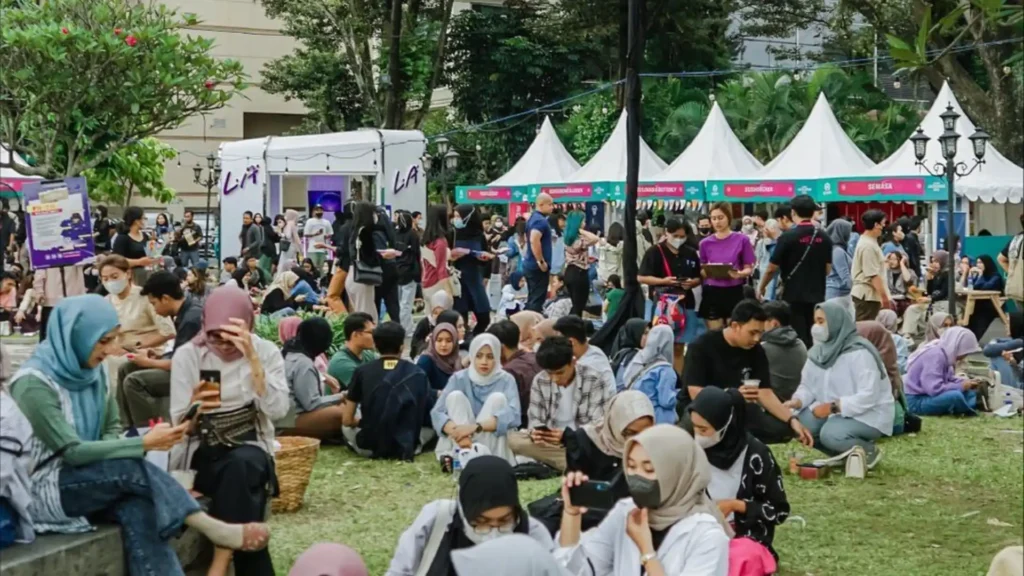The Labuhan Ceremony is one of the most sacred and enduring traditions in Javanese culture, persisting despite the currents of modernization. More than a cultural ritual, Labuhan reflects a profound spiritual connection between humans, nature, and unseen forces. In Yogyakarta, this sacred tradition is not only a symbol of reverence toward ancestral spirits and guardians of nature, but it also reinforces a cultural identity passed down through generations.
Held annually, the Labuhan ritual draws attention from both local communities and curious visitors eager to witness the wisdom of the Javanese royal tradition. Beyond the dramatic act of offering sacred items to the sea or mountains, Labuhan holds deep historical significance, life philosophy, and spiritual insight that shape the Javanese worldview. It is not merely a ceremony, it is a spiritual expression of harmony with the universe.
Curious to know what lies behind this powerful ritual? Let’s explore its rich history, the different types of ceremonies, and the sacred symbols embedded within the Labuhan tradition.
Table of Contents
The Origins of Labuhan
The word Labuhan comes from labuh or larung, meaning “to cast away” or “to release” offerings into the sea or mountains. The ritual dates back to the reign of Panembahan Senopati, the founding king of the Mataram Islamic Kingdom. It served as a plea for blessings from nature’s guardians, ensuring harmony and prosperity for the kingdom. Labuhan also symbolizes the spiritual bond between the monarch and natural deities, particularly the Queen of the Southern Sea, Ratu Kidul, who is believed to safeguard the southern coast.
The ceremony is held at four sacred locations: Parangkusumo Beach, Mount Merapi, Mount Lawu, and Dlepih Kahyangan. Each site carries spiritual weight, rooted in the Javanese belief of harmony between man and nature. There are two types of Labuhan: Labuhan Alit, held annually, and Labuhan Ageng, a grander ritual conducted every eight years, following the windon calendar cycle of Javanese tradition.
Before offerings are cast away, a series of prayers and purification rites are performed. Items such as the Sultan’s hair clippings, worn fabrics, wilted flowers, and ceremonial tools are carefully prepared, each with symbolic meaning, and offered to nature and ancestral spirits. At its core, Labuhan preserves cosmic balance, in line with the Javanese life philosophy of Hamemayu Hayuning Bawana, to protect and glorify the beauty of the world.
Type of Labuhan Ceremony
The Labuhan tradition takes on several forms, each with its own meaning and ritual practices. Among the most well-known are:
Labuhan Alit, An Annual Ritual at Three Sacred Sites
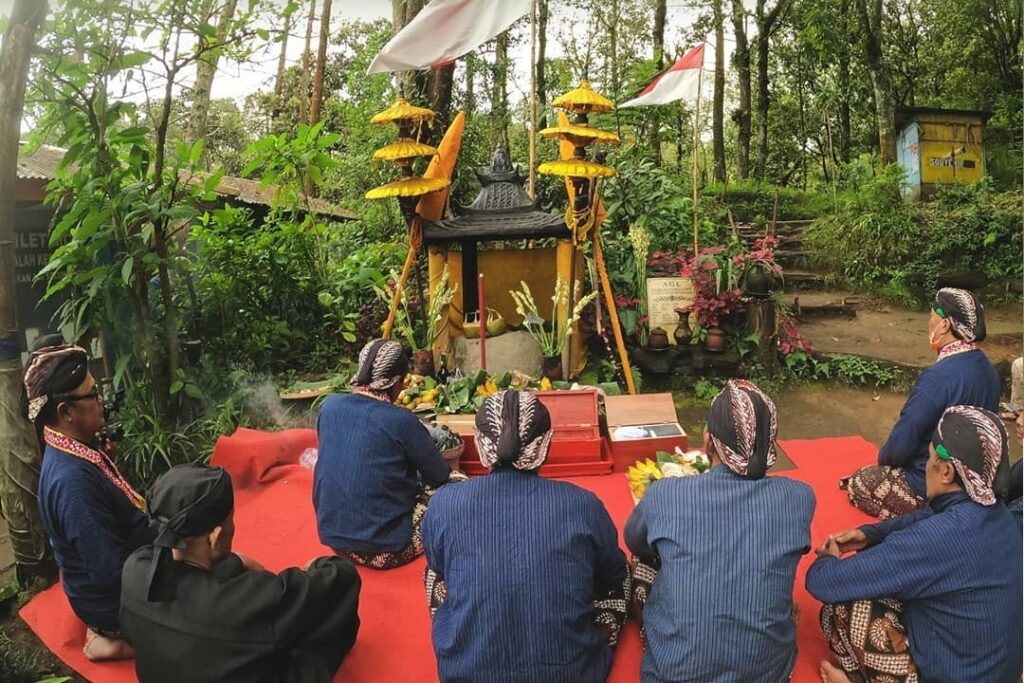
Labuhan Alit is a regularly held ceremony performed each year by the Yogyakarta Royal Court. The offerings are sent to three spiritually significant locations: Parangkusumo Beach (entrance to the domain of Ratu Kidul), Mount Merapi (northern protector), and Mount Lawu (sacred resting place of ancestors).
This annual ceremony is an expression of gratitude for nature’s protection and a prayer for the well-being of the Sultan, the royal family, and the people of Yogyakarta. Led by royal court delegates, including palace attendants and cultural elders, the procession is supported by the local community. The offerings (Ubarampe) are believed to bring blessings, which is why this tradition remains relevant and integrated into the region’s cultural life.
Labuhan Ageng, The Eight-Year Grand Ceremony in Dlepih Kahyangan
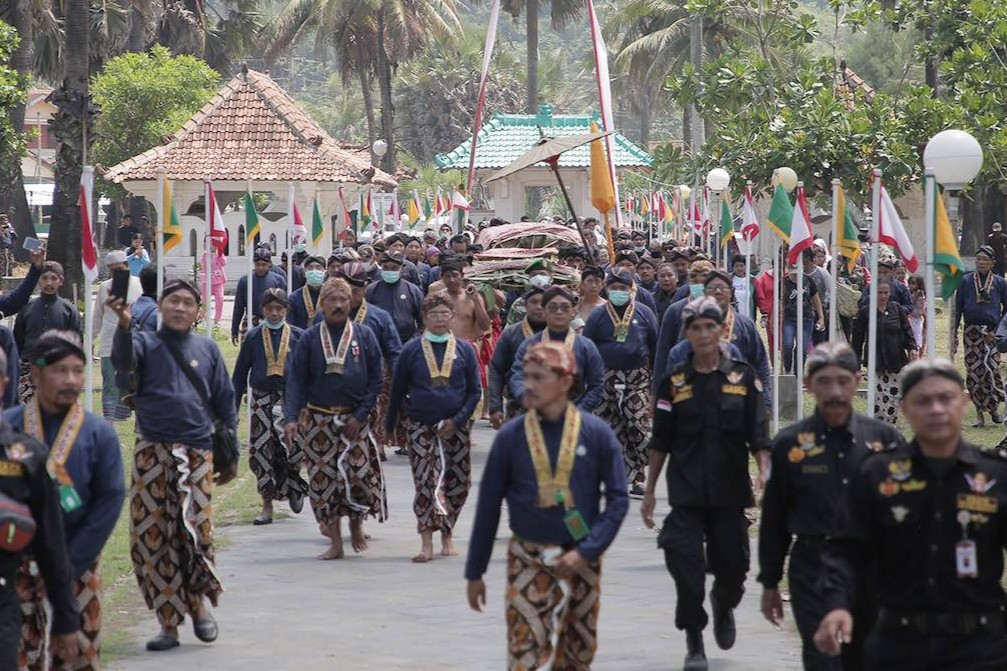
Labuhan Ageng is a larger, more sacred event held only once every eight years in Dlepih Kahyangan, Wonogiri Regency, the site where Panembahan Senopati is believed to have meditated. It coincides with the commemoration of the Sultan’s coronation (Jumenengan), making it both a spiritual and symbolic moment of political significance.
The offerings prepared for Labuhan Ageng are more elaborate, and the rituals extend over a longer duration, featuring traditional dances, gamelan music, and sacred prayers. People from various regions gather to witness this rare and meaningful event. Labuhan Ageng not only reaffirms the spiritual authority of the king but also strengthens cultural continuity across generations.
Labuhan Nelayan (Pissusung), Offering to the Sea
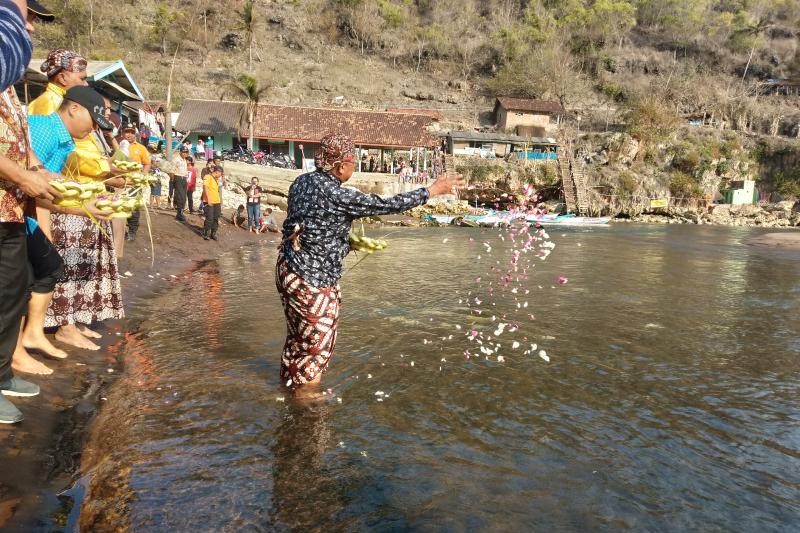
Outside the royal domain, coastal communities also carry out a similar ritual known as Labuhan Nelayan or Pissusung. It serves as a prayer for safety at sea and abundant catches. This ceremony is typically held at sacred beaches such as Baron or Glagah.
Fishermen present offerings including local harvests, buffalo heads, and miniature boats or nets. Though not officially linked to the Yogyakarta Palace, this ritual still adheres to Javanese customs and is performed with solemn respect. Labuhan Nelayan is also a moment of social unity and a reminder of the ocean’s vital role in sustaining life.
Labuhan is far more than a ceremonial ritual, it reflects a deep-rooted philosophy of balance, harmony, and respect for nature and ancestors within Javanese culture. Whether held annually or once every eight years, each Labuhan ceremony conveys a universal message: maintaining harmony between humankind and the cosmos.
It also underscores the role of spirituality in social, cultural, and environmental dimensions of life. No wonder Labuhan continues to be preserved and cherished, welcoming not only local devotees but also curious travelers from around the world, eager to witness a living tradition that bridges the past and present.

